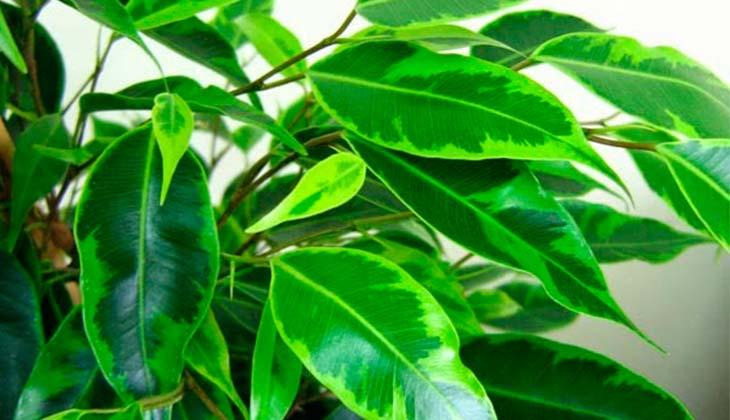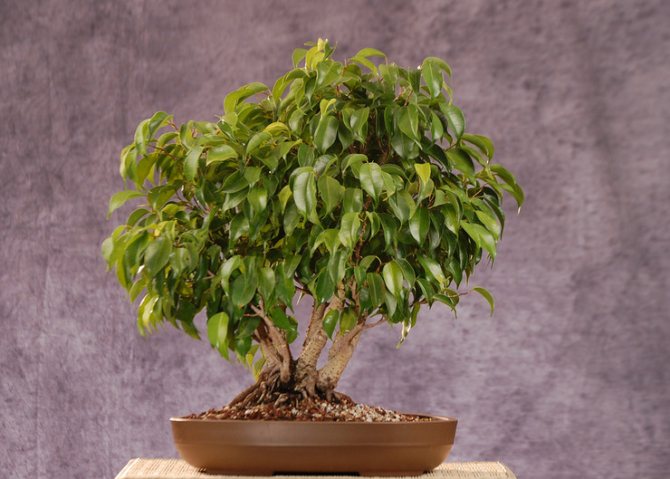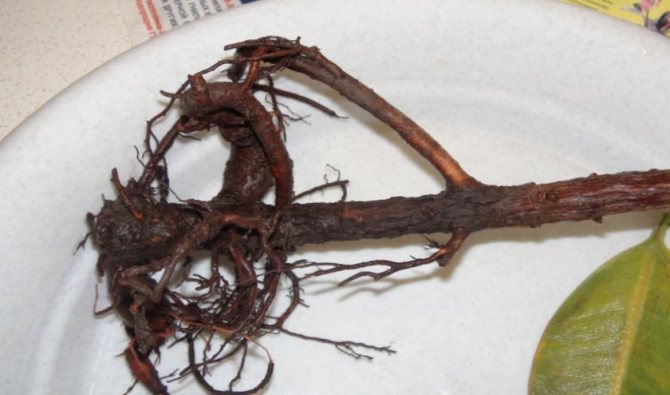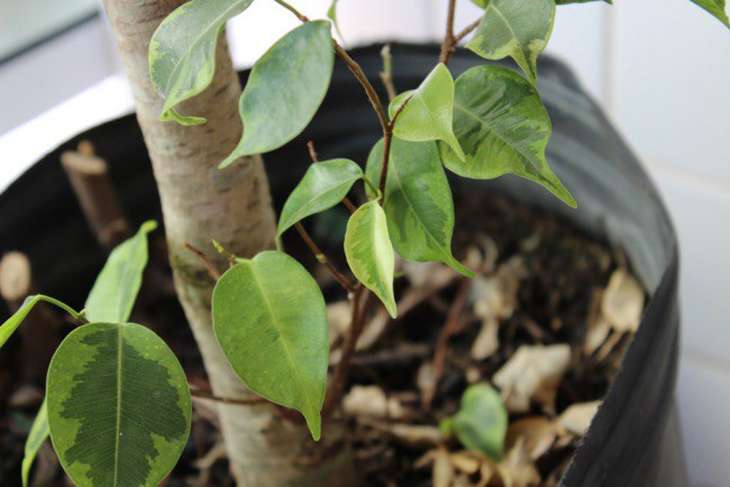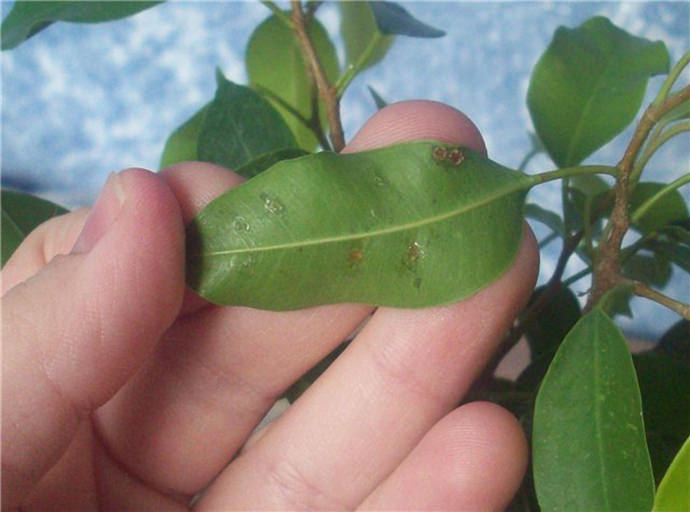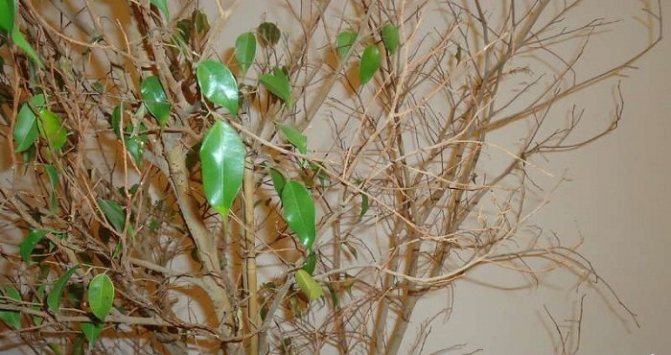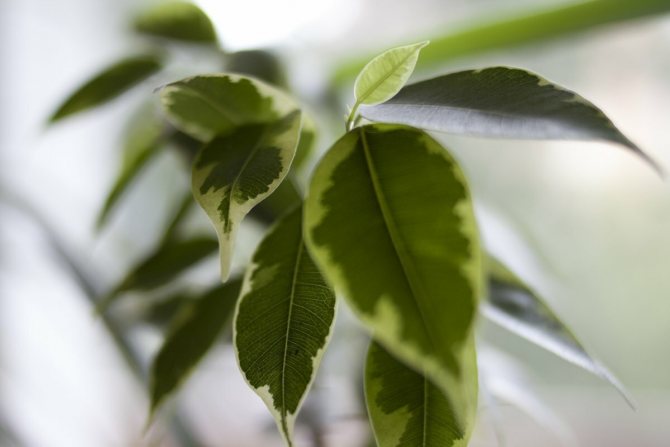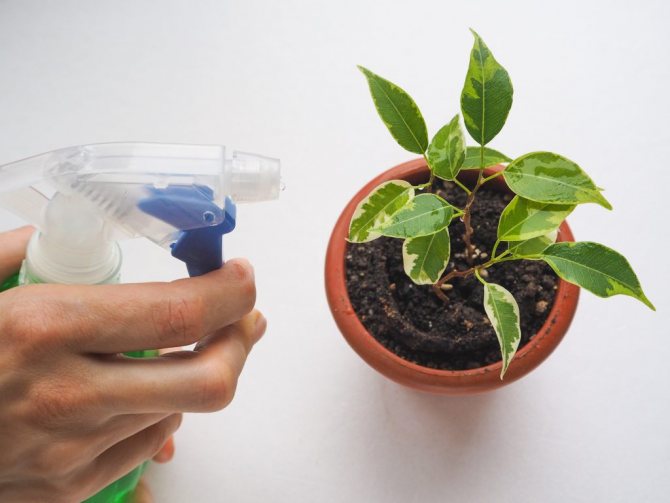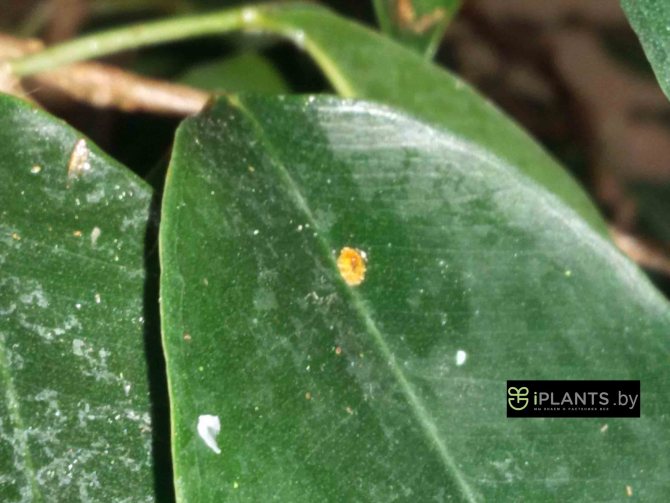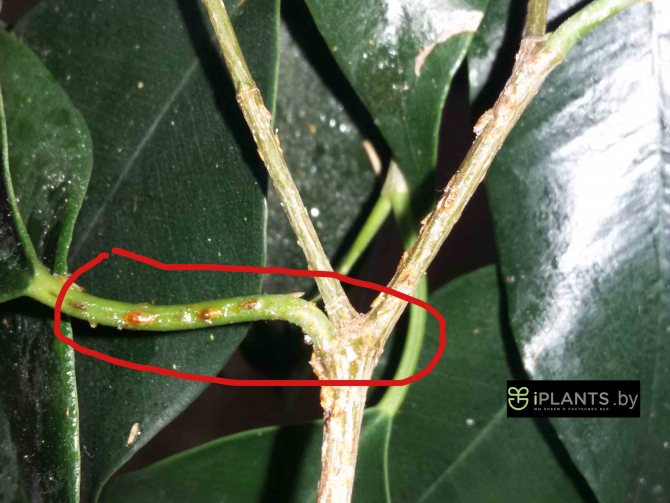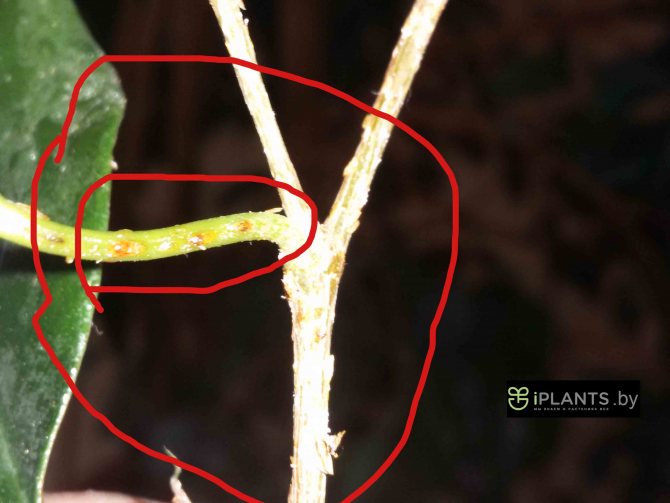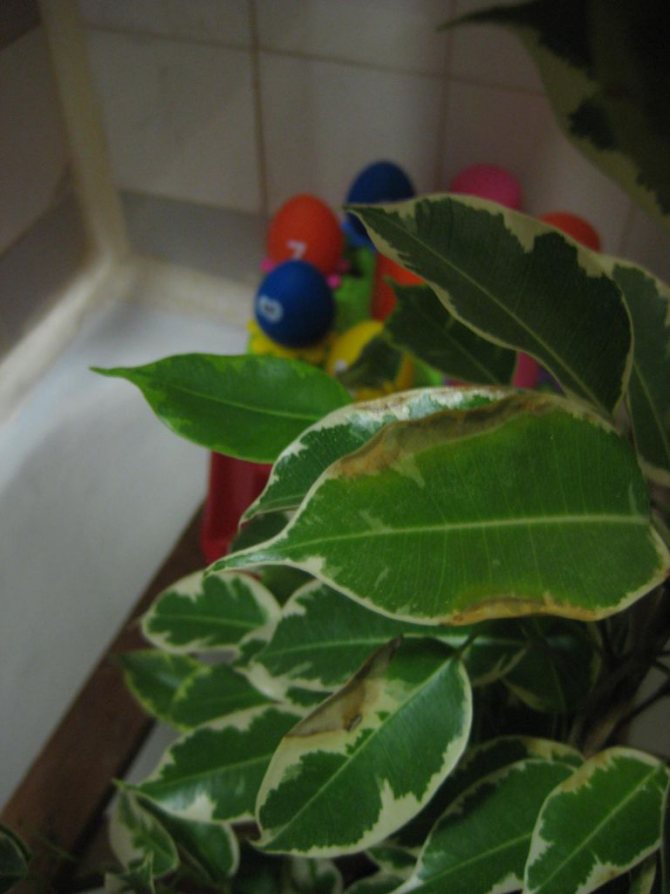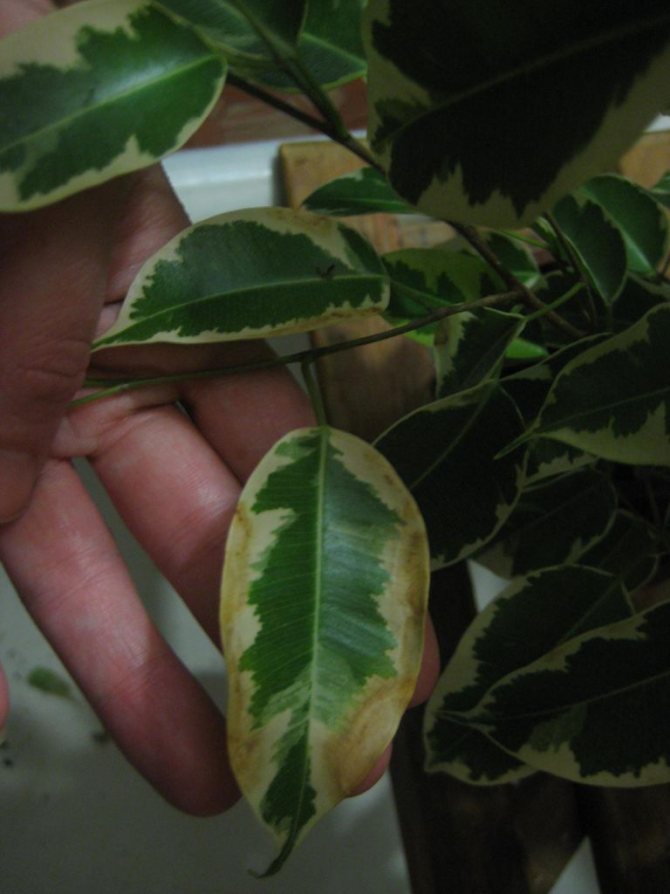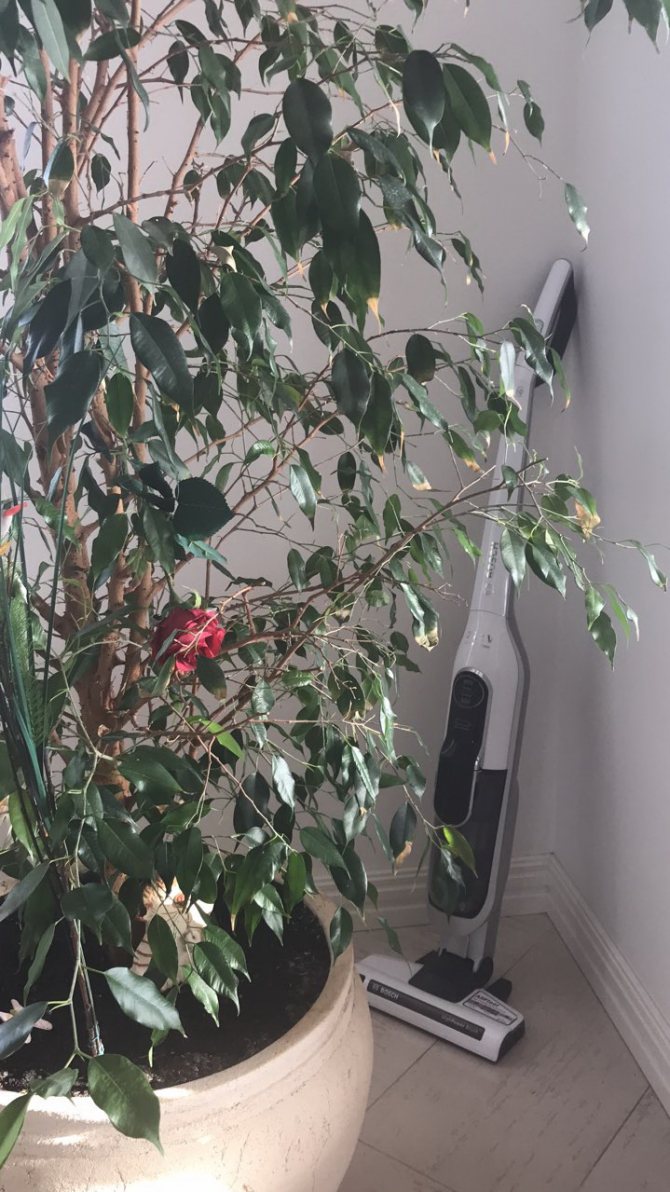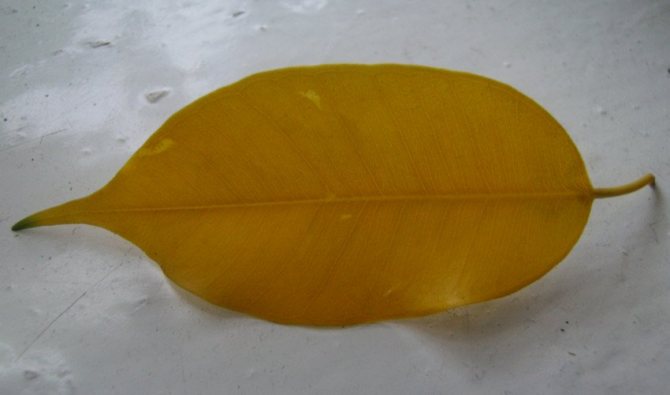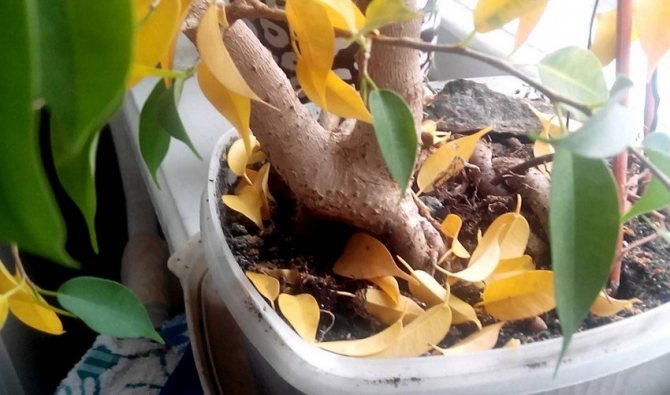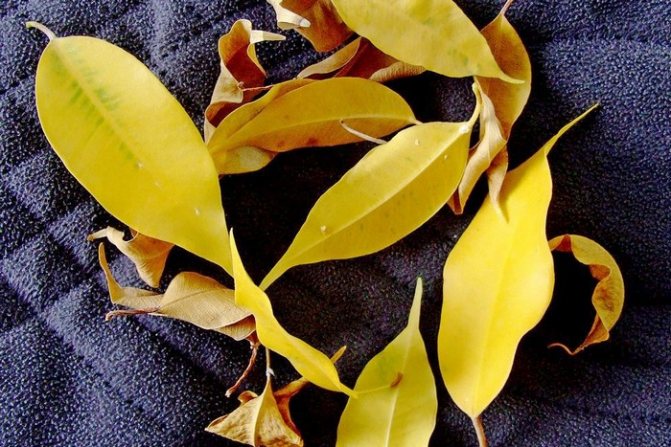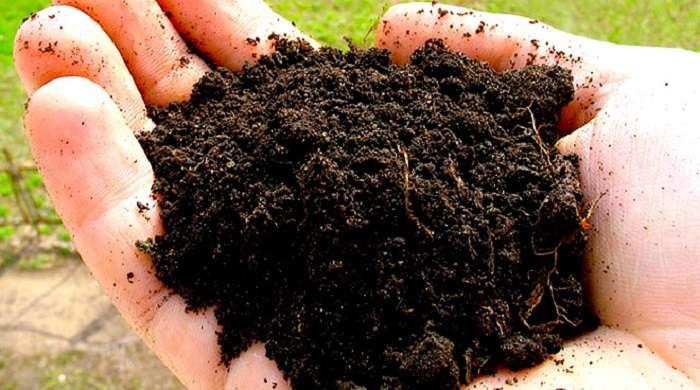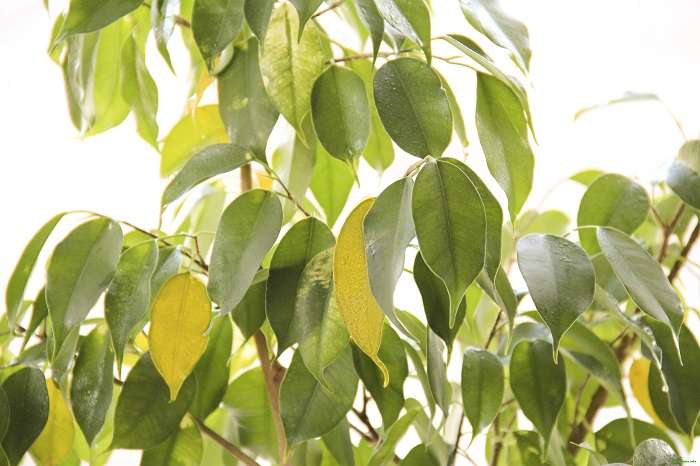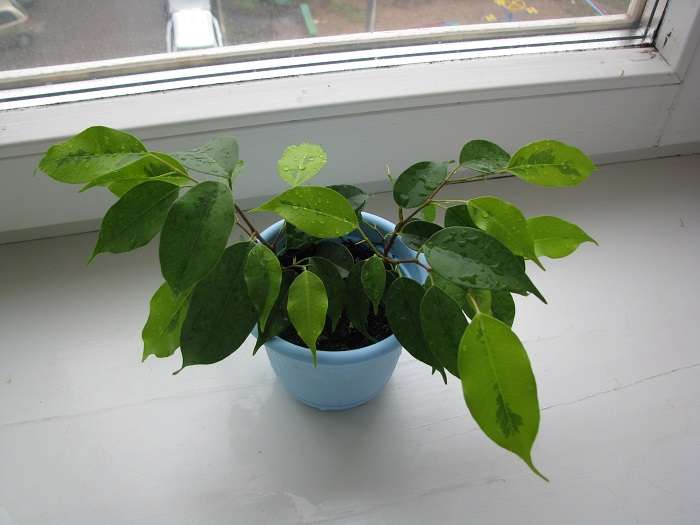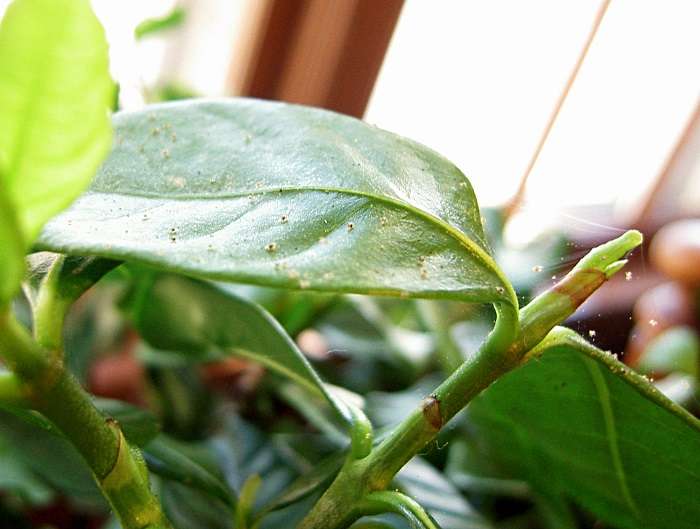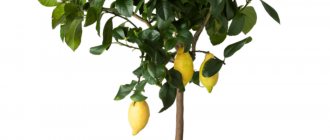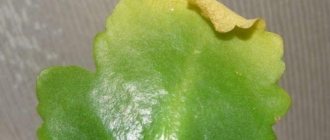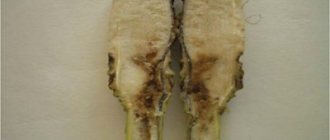Natural causes
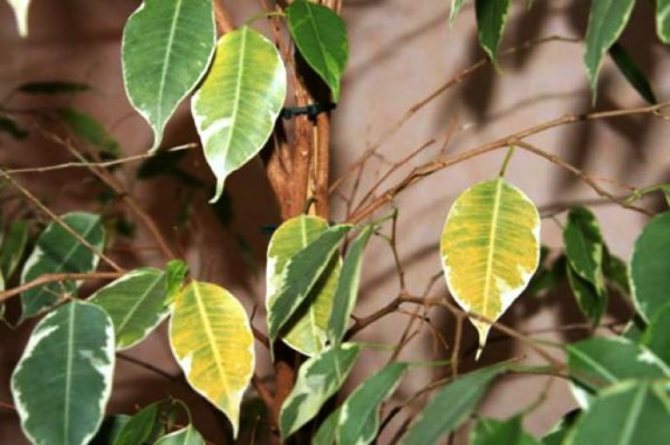
In the cool season, Benjamin's ficus, obeying the natural cycle, can lose foliage. However, such losses are not critical, and the plant quickly recovers in spring. Usually, for natural reasons, ficus loses no more than 10 leaves per season. Note that for natural reasons, the leaves fall off only in winter. Why a similar problem happened in spring-summer will have to be clarified by checking other options.
For natural reasons, ficus can lose foliage during the period of adaptation to new conditions. This usually happens after transplantation, but after a while the plant successfully regenerates on its own. In this case, simultaneously with the fall of the old foliage, the formation of young leaves will be observed. To make it easier for the plant to adapt, keep it in a shaded place after transplanting, water little and do not fertilize at all.
Keep in mind that Benjamin's ficus will always try to build up green mass on the upper tiers of the crown, while the lower leaves may die off safely. To prevent exposing the trunk from below, do not let the flower grow too quickly and actively upward: pinch, prune in time. If the lower leaves, like the upper ones, receive enough nutrients, they will not turn yellow and fall off.
Next, we will consider more serious and requiring intervention causes of yellowing and falling foliage.
Improper watering
Moistening the soil is the factor that needs to be paid attention to if the ficus sheds foliage not for natural reasons. Usually it is illiterate watering that causes the problem.
Waterlogging
In conditions of an excess of moisture, the plant may develop root rot, which leads to external symptoms in the form of yellowing and falling leaves (see photo). If measures are not taken in time, the plant may die completely. As a rule, root rot is accompanied by an unpleasant odor from the pot, soil.
To make sure that the root rot is the cause, you can take the plant out of the pot and examine its roots. If the roots really rot, they look slimy, and so do the touch. The color of the affected roots will be dark - gray or black. Dark rotten rhizomes should be cut off to a healthy part, and then transplanted into a pot with new soil.
Before planting in a new pot, the cut roots must be soaked in a potassium permanganate solution for disinfection. Transplant only in completely dry soil and do not water the plant for the first time. You can only wipe the leaves superficially with a damp cloth.
In winter, care should include moistening the ficus once a week, not more often: in conditions of coolness, lack of light and high humidity, root rot can develop especially rapidly.
Lack of moisture
Lack of water can also lead to similar consequences - only the leaves in this case will also dry out. In case of insufficient moisture, the ficus will try to get rid of the "ballast" that needs to be nourished - and first of all, the leaves will be the ballast.
If the problem is precisely the lack of water, it is not difficult to solve it: you should water the plant abundantly several times. And in the future, it is necessary to constantly monitor the degree of drying out of the soil.From watering to watering, the soil should dry out by one and a half centimeters, on average - this is what concerns a young ficus. In an adult specimen, the soil should dry out by 3 cm.
Soil alkalization
This reason, leading to yellowing and falling of the ficus foliage, is also associated with watering. Alkalization occurs when the plant is watered so that water does not drip from the drainage holes: that is, the soil is not soaked enough. As a result of such watering, salts dissolved in water settle in the ground. It alkalizes especially quickly if hard tap water is used.
To avoid the problem and its consequences, it is recommended to water the ficus only with soft water and in two steps. The first time in the usual way, and the second after half an hour is very abundant: so that water must drip from the drainage holes. Such increased watering promotes the removal of salts from the soil to the outside.
How to save rubber ficus. Ficus rubbery dies
Good day. Your help is very necessary. The rubbery ficus dies. 40 days ago we bought it in a store, two days later I took it out of the pot, freed the roots from the soil, transplanted it into universal soil, where I added swagnum and black coal. I put the drainage at the bottom. Watered three days after transplanting. I water as the top layer of the soil dries out. I taste the soil with my fingers. Literally a few days later, the lower leaf flew off, then the leaves began to fall off one by one, turning a little yellow. The last leaf fell off today, without even having time to turn yellow. The leaves dropped, the trunk wrinkled. Below it became dark and acquired the color of decay. Hard to the touch, but not as hard as at the top of the barrel. At first I thought that I would get sick and everything would be fine. But now I understand that I am doing something wrong. When, during transplantation (a month ago), I took the plant out of the ground, the roots were wrapped in a proclamine bundle containing soil and white powder. I removed everything, tried very neatly with a stick. I cleaned the roots completely from the soil. They seemed to be good, bright. I dried it for about 10 minutes. Now every morning I am afraid to look at him. I put it on the cabinet next to the window. Direct rays do not hit. But before that I changed places several times, tried to understand what was better for him. I try not to touch it so that the leaves do not fly off. I really like this flower, I have long dreamed of having one. Please help me to cure him, if it's not too late.
Top dressing
There are two options for the development of events: either too much fertilizer, or not enough.
Lack of minerals
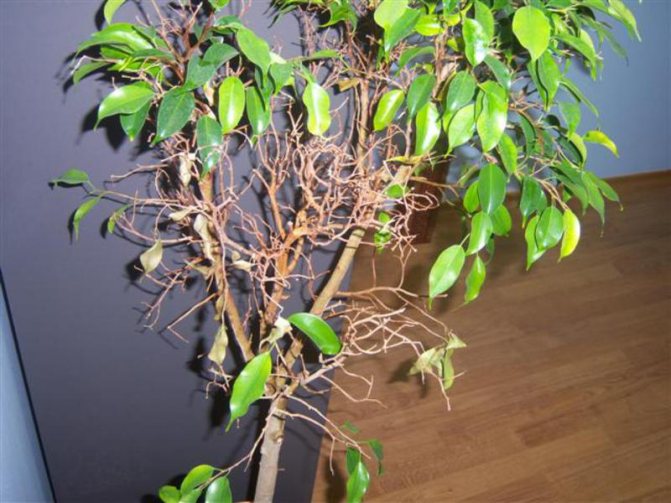

If the foliage of Benjamin's ficus turns yellow due to a lack of minerals, then most likely the matter is in iron deficiency. Due to the lack of this mineral, the so-called chlorosis of the leaves occurs. Chlorosis manifests itself as yellowing.
Feed the plant with a solution of Ferrovit or Iron Chelate - if the reason is established correctly, the plant will recover soon.
Sometimes ficus leaves turn yellow at home and due to a lack of magnesium. Usually, in this case, the oldest leaves located at the bottom begin to turn yellow. If you notice a symptom, feed the plant with magnesium - for example:
- magnesium sulfate;
- dolomite flour;
- potassium magnesium.
If you do not feed the plant for a long time, the soil in the pot can be completely depleted. In this case, the flower weakens, withers, sheds its leaves. Feed the ficus regularly using complex fertilizers in liquid form. In addition, adding fresh soil to the pot will also be beneficial. And in order for the leaves of the ficus to acquire a rich green hue, use along with root and foliar dressings.
Overfeeding
The opposite situation also happens - when there is too much fertilizer. In this case, a root burn or a weakening of the plant is possible due to an excess of chemicals.
To avoid overfeeding the ficus, add additional nutrition only during the active growing season of the plant - that is, from the beginning of spring to September approximately. In winter, the plant rests and does not require feeding. Let's say more - top dressing in the winter, especially with nitrogen, can even lead to the death of the plant, since nitrogen, in the absence of vegetative activity, causes rotting of the roots.
Temperature and humidity
Ficus Benjamin is able to feel good and develop normally at an external temperature of + 18-25 degrees. If the air warms up more, and this situation lasts long enough, the leaves begin to dry, turn yellow and fall off.
If the situation is the opposite, and the temperature drops below +18 degrees, the plant also reacts by dropping foliage. This happens when a pot of ficus is placed on a cold windowsill in winter, on a stone or marble floor - this should never be done, especially in winter.
It is unacceptable to keep the plant in conditions of sharp temperature changes. Ficus Benjamin does not adapt well to new conditions, and if they are also often changed, serious problems arise. Place the plant in a strictly defined place in the room and do not change its position for as long as possible - only if absolutely necessary. Avoid drafts and keep the ficus away from the cold wind from the window or vents.
Humidity
As for the level of humidity, Benjamin's ficus cannot stay for a long time in very dry air and at a high temperature. In such conditions, yellowing and shedding of foliage should not be surprised.
In winter, due to the working batteries, the air in the apartment is constantly dry. To avoid problems, often spray the air around the flower with a spray bottle. If you have no desire and time to mess around with spraying, you can solve the problem radically by installing a humidifier.
Ficus rubbery leaves fall. Reasons for shedding foliage
To help a plant, you need to know why it sheds its leaves. This is usually due to the conditions in which he lives.
Change of place
Leaves may fall off after buying a flower in a store, or when it was moved from its usual place to another in the house. Moreover, it is not necessary to transfer it to another room, but simply rearrange the pot in one room and the rubber-bearing ficus will already feel uncomfortable.
Lack of lighting
Why especially often for this reason leaves fall in winter. Since the plant lacks natural light, and artificial light cannot replace the sun. In this case, they acquire a pale shade, and then crumble.
Failure to comply with watering rules
Excessive and irregular watering of rubbery ficus leads to the fact that its leaves fall off. First, they turn yellow, then acquire a brown tint, and then crumble, in addition, due to constant waterlogging of the soil, diseases of the root system can develop. Insufficient watering leads to the same consequences.
Unsatisfactory microclimate
The leaves can crumble under the influence of drafts, sudden changes in temperature in the room or when it is cold, and as a result, diseases can develop on the roots.
In order to prevent foliage from falling off a rubber-bearing ficus, you need to create a comfortable living environment for it. If it grows well in the place where it was originally placed, then nothing needs to be done with it. If the plant was recently brought from the store, then this is a normal process, when the rubber-bearing ficus adapts, then the leaves will stop falling off. If the matter is in the watering regime, then you need to ensure that the plant receives a sufficient amount of water. So that its root system does not dry out and does not drown in water.
Lighting and transplant
Due to prolonged exposure of the plant to the sun, its leaves can get burned. The problem is solved in an elementary way - the pot is simply removed to another, more suitable place for the plant.
In winter, the leaves may turn yellow due to the opposite reason - a lack of light. This leads to a slowdown, or even to a halt in the processes of photosynthesis, in connection with which a noticeable yellowing begins. To avoid such a problem, it is recommended to organize additional lighting for the plant in winter.
Transfer
Ficus does not grow too quickly, and it only needs a transplant once every two years. During this time, the roots of the plant are completely entwined with an earthen lump, therefore, this period is recognized as optimal. If you transplant the plant more often, problems are possible, since the ficus does not like changing places, it does not adapt well.
Pests
Sometimes the leaves of the plant turn yellow due to damage from harmful insects. Next, let's take a look at the most common parasites.
Spider mite
An insect that sucks out the juices of the green part of the ficus. You can find a mite by checking the back side of the leaves - small translucent cobwebs are visible there. They fight the pest by wiping the leaves with a damp cloth or arranging a shower for the ficus. If the measures do not help, apply insecticides.
Shield
This miniature insect pest is covered with a durable shell like a shield. Therefore, poisoning the scale insect with insecticides is not always effective - the shell protects it from poison. Florists cope with the misfortune by treating ficus leaves with garlic tincture or vodka, alcohol.
Several procedures need to be carried out - only this approach can guarantee the success of the enterprise. Usually, the treatment is repeated every week for about a month.
Dangerous for ficus and mealybug. In any case, if damaged by pests, the yellowing of the foliage will be uneven, spotty.
To get rid of harmful parasites, flower growers often use a tool such as Epin. Spraying is done once a week for a month, sometimes less. It is necessary to perform the procedure in the evening, when it is already dark outside: the recommendation is connected with the danger of sunburn by leaves.
Brown and yellow spots
Such a symptom may mean improper watering: excess or lack of moisture. Coordinate the hydration schedule of the ficus tree in such a way as to maximize the strength of the plant and not harm it.
But more often the spots, especially brown ones, indicate pest damage. So, thrips lead to the appearance of spots and the subsequent fall of foliage. Note that these parasites multiply surprisingly quickly and can soon colonize the entire flower. In addition to yellowing of the leaves, thrips lead to deformation of the stems and shoots of the ficus.
They get rid of parasites by washing and spraying the flower with drugs such as:
- Pyrethrum;
- Tanrek;
- Actellic.
The appearance of spots is also possible due to the mealybug. This pest leads to the appearance of convex brownish-yellow formations on the leaves of the ficus. Then the leaves dry, curl up and fall off. They fight the worm by washing the flower with warm water and soapy water. If the defeat is strong, spray with Aktellik, Confidor.
Ficus disappears, how to save. Ficus Benjamin. Resuscitation
A year ago, I gave my son the rooted layers of ficus. It was quite such a lush bush.


And then this sufferer (I'm talking about ficus) returned to me with a beautiful number of leaves - 8 pieces. We urgently need to save. Saving the ficus This is how he found himself.
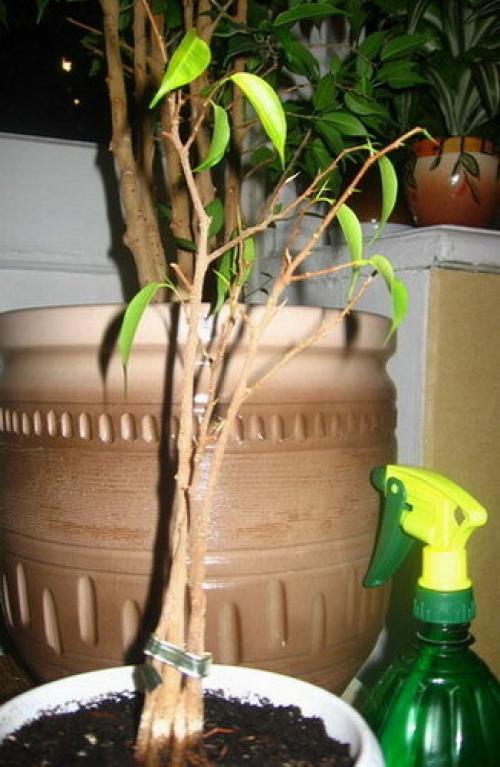

- Drops the leaves, but what is the matter - I do not understand, - said the novice florist. - Here I brought it to the intensive care unit. I ask: - Do you water it? - Yes. I make sure that the water goes into the pan. - Fertilizing? - I recently poured fresh earth for him. - When? “I don’t remember, but not so long ago. - Why is the pot so huge? - To transplant less often. I went to examine the "patient" in the bathroom. The lump is dry to the very bottom.Apparently, during irrigation, water has long flowed along the paths made by the roots, without wetting the ground. Considering that he was not pampered with feeding either, it is surprising that he is still alive. But on all the branches there are green "needles" of the leaves, which do not have enough strength to bloom. In fact, this is a good sign - it means that you can still save the ficus. Shook off the excess earth. A large capacity of ficus is useless: the roots can rot. Yes, and in its current position there is nothing to evaporate moisture. Spilled a lump with soft warm water. Finally, I watered it with zircon so that the roots would take root better. I poured a little fresh soil to the bottom of a small flowerpot, compacted the soil around the edges. I sprayed the ground part with epin and covered it with a damp transparent bag: he now needs greenhouse conditions. I put it in the shade. For three days he lived under the "greenhouse". I aired, sprayed with epin (2 drops per glass of water). On the fourth day, young leaves began to bloom.
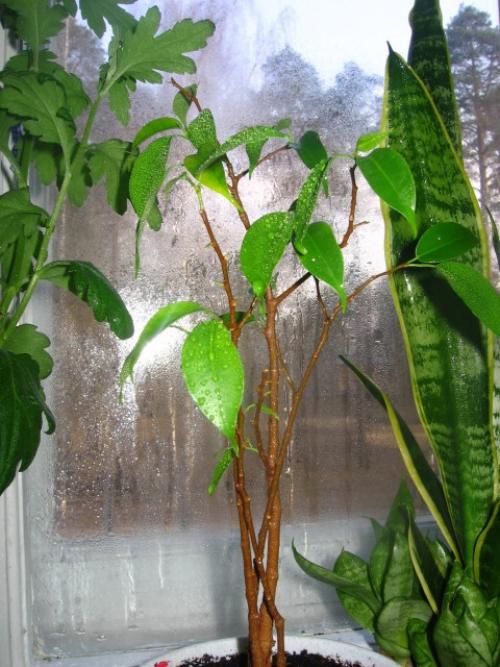

After 10 days, the number of leaves doubled. Will live! But that's why I need so many ficuses! His son does not take him back, but I have four of my own. This time I gave my son an easier-to-handle fat woman. Let him train "on cats" :-) Still, ficuses themselves are difficult plants to care for. And the ficus came to life and became handsome. In a year
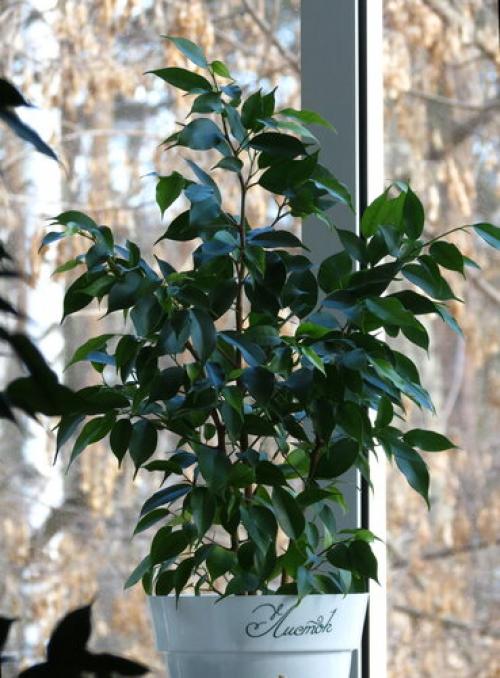

I gave it to a neighbor.
Leaves turn yellow and curl


This problem in ficus occurs most often in the following cases:
- due to sunburn;
- lack of nitrogen;
- freezing of roots.
Problems are eliminated in this way:
- the flower is moved to a more shaded place;
- fed with a nitrogenous complex;
- raise the pot from the floor to the stand.
Pest / disease infestation sometimes leads to a similar symptom. The foliage of Benjamin's ficus usually curls and turns yellow due to the defeat of fungal diseases by anthractosis or cercosporosis.
Cercosporosis
It occurs due to the presence of a plant in conditions of excessive moisture. It appears at first as black dots on the leaves, which then turn yellow, curl, fall off.
To solve the problem, watering the flower is stopped, and the parts of the plant affected by the fungus are removed. After pruning, it is necessary to treat the ficus with an antifungal fungicide.
Anthracnose
In this case, spots of a dark yellow, rusty hue appear on the leaves. Simultaneously with the appearance of spots, the leaves begin to curl up a little, then fall off. They solve this problem with fungicides.
Aphid
A small insect sucks out juices and vitality. As a result of the defeat of aphids, the ficus loses strength, weakens, withers, its leaves turn yellow, curl. Aphids are also dangerous because they are a carrier of viral diseases. Get rid of aphids by washing the flower and spraying with fungicides (Pyrethrum is suitable). It is better to remove heavily affected parts of the flower.
Nematodes
These miniature worms lead to lethargy, weakness of the plant, twisting of its foliage. Due to the defeat of nematodes, the decorative effect of the ficus suffers greatly, and if not treated, the flower may die altogether.
To detect nematodes, you will have to remove the plant from the pot along with the roots. Small beads can be found on the roots - these will be nematodes. After detection, it is necessary to remove the affected rhizomes, treat with fungicides and transplant the flower into clean soil.
How to save a ficus benjamin. Help save Benjamin's ficus!
- Posts
Taisiya Vishnevskaya
Participant
Help save! The plant is dying before our eyes, was purchased in September. They transplanted about a month later, it seemed to have taken root, even grew a little. The first photo - this is how it was in mid-January (sorry, there is no better photo, I didn't take a photo of it on purpose) then the leaves began to fall abundantly. The rest of the photos are today. One branch had to be cut off, as the leaves completely fell off - she became bald. There is only one small twig left and a little more, their leaves are also falling off.there is an assumption that it was poured, I reduced watering, but today I checked the ground, I thought it was damp, but it was 4 cm dry, I decided to water it. whether it is not enough watering. or overflowed and the roots rotted? I don’t know what to do! the leaves wither, turn pale, curl and fall off, some do not curl - they just turn pale and crumble! he always stands in this place, he liked everything, I do not allow drafts, I spray with water at room temperature. Thank you!
Investments:
Savinov Maxim
Moderator
There are several options in my opinion. 1) Poured. Check the roots by removing the plant from the pot with a lump, if there is an appropriate smell and appearance, then dry it, remove the rotten and do not overfill. 2) Dry air. But you said you spray. How often? 3) Lack of sunlight. The photos are dark, which gives the impression that it lacks lighting.
Taisiya Vishnevskaya
Participant
I spray every day. a shelf with flowers near the window. and the first photo was taken in the late evening, a small lamp was on. yes, it seems like other flowers-neighbors on the shelf do not complain, so to speak, about a small light. but it's scary to check the roots, suddenly it will finish off even that barely living plant ((but still I probably decide on this .. or is it okay if you take out and see what's inside the pot?
Savinov Maxim
Moderator
Of course, check the roots, don't pull. The window does not mean sufficient lighting, the neighbors may be shade-tolerant, and the ficus does not apply to them. Which side do the windows face?
Anonymous
The soil can be half dry, and at the bottom there is rot with a very unpleasant odor, I was personally convinced. Take out, change the substrate, there is always good drainage and it is light-loving. Mine grew, transplanted into a larger pot, removed it from the window sill, a little further, and began to shed leaves too. I returned it to the windowsill - everything is fine.
Natalya
Participant
I have had this ficus for more than 10 years. While it was small - in the summer they took it out to the balcony in the sun, sprayed it twice a day. Became 2-meter high - stands near the window, water as needed - if the soil from above is very dry. Be sure to feed with fertilizers, spray, in winter it is especially abundant and moisturize the trunk. In addition, we have planted three trees at once. We did not know that when they were young they could be combined into one by interweaving the trunks, so there is a small grove of ficuses in the pot. Your ficus is clearly dark and boring.
Ekaterina A
Participant
Photo # 3 clearly shows a leaf drying up from overflow. Dig it or not - decide for yourself. Dry, dry the soil well, despite all the warnings, ficuses normally tolerate overdrying of the roots. The main thing is to spray well (shower) over the crown. Remove the top layer of soil, or if you dig, expose the top of the roots when planting again. Check the stems around the root collar. In case of decay (soft trunk) - cut the plant at the level of healthy wood, and re-root. In principle, the best option for reanimating a sick Benjamin. There is a lot of information on the rooting of a ficus by a cutting on the Internet. Soak in water so that milky juice comes out, dry and again in warm water. All ficuses are cuttings very well, like figs, like Benjamins, like rubbery ones, and so on. The main thing is to be warm and humid.
Author
Posts
Viewing 7 posts - 1 through 7 (of 7 total)
You must be logged in to reply to this topic.
If the leaves turn yellow at the edges
Let's consider why the problem arises and how to solve it at home.
This symptom is usually associated with damage to the plant by parasitic pests. Usually the spider mite is the culprit in this case. The pest is recognized by specks on the leaves, dots, marginal yellowing. If you do not pay attention to the problem in time, the leaves, turning yellow, begin to dry and fall off, die off. The mite is usually removed by spraying the plant with a phosphorus or sulfur-containing insecticide.
If you pour ficus regularly, the leaves will begin to turn yellow at the edges, and then the yellowing will spread to the entire plate. If you notice a symptom, take action immediately:
- transplant the flower;
- add dry soil;
- take care of drainage;
- loosen the soil regularly.
Exposure to direct sunlight also sometimes manifests itself as yellowing of foliage from the edges. The problem is solved simply - you need to remove the pot in a more suitable shaded place or shade the window.
Prevention measures
What measures can and should be taken to care for the plant so that the ficus is always in a good mood, and its leaves do not turn yellow.
- Maintaining the optimum air temperature without sudden changes is a prerequisite. Ficus Benjamin is suitable for temperatures of + 20-25 degrees in summer and spring and + 15-16 in autumn and winter.
- Leaves must be kept clean and fresh and moist. To do this, regularly spray the plant with a spray bottle or wipe its leaves with a damp cloth.
- It is necessary to keep ficus in abundant light, but without direct exposure to aggressive sunlight. An oriental window sill is ideal.
- Watering should be done in moderation, avoiding waterlogging or drying out of the soil. Use only clean water without bleach and settled.
- It is not necessary to often transplant unnecessarily - especially if the ficus is already an adult. The plant does not adapt well, which also sometimes causes foliage to drop.
- After watering, you need to loosen the soil in order to minimize stagnation in it.
So, we learned for what reasons the leaves of Benjamin's ficus turn yellow and fall off. Also figured out what to do with this problem. There can be many reasons - first of all, you need to think about the natural experience of the winter cold by the plant, then about problems with moisture, and then about other reasons. With the help of our article, you can understand why your pet is suffering and, without a doubt, help him.
How to bring Benjamin's ficus back to life. How to revive a ficus
Any florist dreams that his favorite plant will delight with bright green leaves, as the ficus does. A fairly unpretentious plant can decorate any home, but quite often after the ficus is brought from the store, it begins to fade before our eyes. To save the ficus, you need to know the rules for caring for this plant.
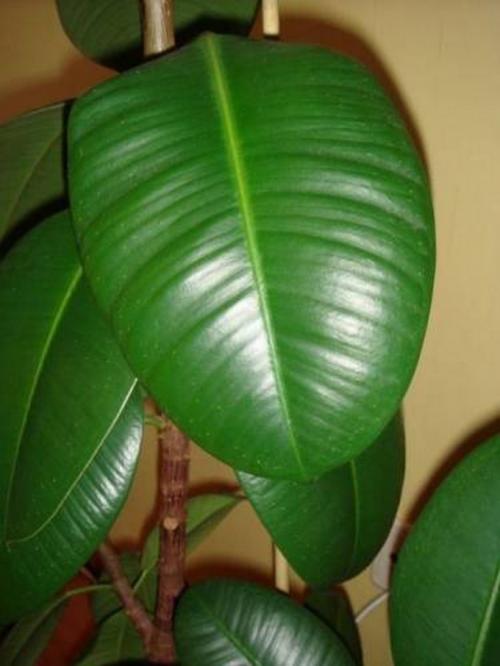

You will need
- Pot, ficus soil, drainage, charcoal
Instructions
1
The flower loves moderate lighting and watering, is afraid of drafts and does not tolerate overdrying of the soil. Therefore, when thinking about how to revive a ficus, first of all, analyze the conditions of its maintenance. Perhaps the usual change of its location can help. If possible, place the ficus tree on the sill of a southeast or southwest facing window.
2
In the event that the leaves fall off the ficus, but the trunk remains flexible and alive, it can be left. If rot appears, and plaque has formed on the top layer of the soil, repot the plant. The roots sticking out of the pot also indicate the need for transplantation. In this situation, the plant simply lacks nutrients, since the roots have filled all the free space. Take a pot that is no more than a couple of centimeters in diameter than the one in which the plant is located. Pour drainage on the bottom, and then add ficus soil. The roots of the plant must be carefully examined. Cut dry roots and those with signs of decay with scissors and treat with charcoal powder.
3
After the plant is repotted, water it regularly to keep the soil dry and spray the remaining leaves with water from a spray bottle to keep the room humid. Until the plant takes root, it is not fed.If everything goes well, then feed the plant no earlier than a month later.
note
Starting to fear for the health of the ficus, you need to remember that in a variety such as Benjamin's ficus, leaf fall in the fall is natural. The plant loses up to 20% of the total amount of foliage and this is not associated with diseases.
Helpful advice
Sometimes flower growers make a common mistake: believing that all diseases of the ficus are associated with insufficient nutrition, they begin to intensively feed it. For a plant trying to survive, this nutrient influx is overwhelming and can backfire.


